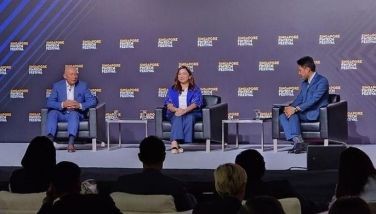Story of Philippine war on drugs

Patricia Evangelista was a trauma journalist who worked as a field correspondent for Rappler in Manila during the term of Rodrigo Duterte. She describes herself: “I was one of the reporters covering the result of the president’s pledge to destroy anyone – without charge or trial – whom he or the police or any number of vigilantes suspected of taking or selling drugs. The volume of Duterte’s dead was at times overwhelming, as was covering the powerful in a country where the powerful refuse to be held to account.”
Because of her work, she was able to compile and eventually write her first-hand information about the number of killings resulting from the so-called Philippine drug war.
The book “Some People Need Killing: a Memoir of Murder in my Country” published by Random House, 2023. The story of the circumstances that led to her writing of the book is itself melodramatic. She wrote: “At the time, I was investigating a series of killings in the capital. It was slow work. I hunted down witnesses. I culled official reports. I met men who detailed the precise manner in which they killed their own neighbors on orders from above, then sent interview requests to the police officers they accused. Rappler decided my presence in Manila was a security risk. I agreed.”
It was while Evangelista was in self-imposed exile that she signed with the publisher, committing to a first-person account of the Philippine drug war.
In the first of three parts, Evangelista gives a political background and a personal story that is the setting for the subsequent narratives of the drug war.
For me, the most interesting are her stories of Duterte as mayor of Davao City and the Davao Death Squads (DDS). There is also a brief account of the Senate investigation then headed by Sen. Leila de Lima on the existence of these DDS. In an excerpt of the exchange between Sen. de Lima and a witness, Arturo Lascañas, the witness revealed that the code name CM stood for city mayor which referred to Rodrigo Duterte. In the book, it was said that “Lascañas was the DDS field boss.” Lascañas’ right hand was Matobato, who worked as a hired killer for DDS. He estimated that during the 24 years he worked as a hired killer, the DDS killed at least a thousand in Davao City alone. He called the man he worked for as “Charlie Mike” or CM.
The core of the book are the specific stories about the different killings. They were detailed and many times had names. Some narratives were short, while some were long and detailed – but all powerful accounts.
One example Evangelista cited was: “In December, five months into the war, another little girl saw her father die. Her name was Christine and she was fourteen. ‘One day,’ she said, ‘the cops came looking for Pa.’ They found her mother instead. The cops called Christine’s mother an addict. She was eight months pregnant. They took her away in a white van. When Pa came home, everyone told him to run.”
Christine’s father ran and hid but came home a few months later to visit his children. Then he told them that he loved them and it will be a while until he came back again. The story continues: “They heard shouting outside the house. Three guns appeared at the window, the barrels bright in the sunlight. The doors burst open. They had Pa kneel on the armchair.”
All the children except Christine fled. “She was there when the policeman shot her father through the back of the head, through the chest, shot him at such close range that the next day her little brother stuck his finger through the hold in the sofa and dug out the bullet. The police said Pa had fought back. They said he was a drug dealer. They said they had killed Pa in self-defense. It was a long time after Pa died before Christine spoke again.”
Among the other narratives was another that began 20 minutes past midnight on Aug. 15, 2017. This is a story of how the police in less than 24 hours were able to bag 32 more corpses in the province of Bulacan. Evangelista names the ones who were killed and the times they were killed.
In one chapter, Evangelista writes about the practices of a gang called Confederate Sentinels Group (CSG) who acted as a vigilante group for the police. She says that her source, a man called Commander Maning, had set the bounty for each dead target. “It ranged from P30,000 to P40,000 although it once went as high as P100,000. We only got paid if we killed, Angel said. The money was split among the members of the kill team: driver, shooter, lookouts, backup, finisher.” The story of the CSG is much longer.
One of the most interesting things about the book is the reference to specific vocabulary which have become synonymous with the drug war. “Tokhang” which was “Bato de la Rosa’s brainchild, the velvet glove over the iron fist… Tokhang did not exist in any of the local languages. It was a portmanteau designed especially for the drug war, derived from the Visayan word toktok and hangyo – knock and plead. Tokhang meant house-to-house visitation led by the police… It was, the police said, an invitation, not a demand. If it so happened that a suspect was killed, it was because he had pulled out a gun.”
The book is impressive because the stories are substantiated by 339 endnotes. In her prologue, Evangelista stresses that these stories are not hers, but those of the victims whose lives she wants to honor. This book was written with having to pay a high price – for even today, the author is haunted by the trauma of all she has witnessed.
* * *
Email: [email protected]
- Latest
- Trending




























